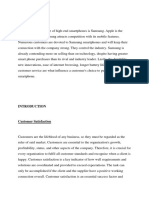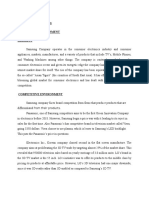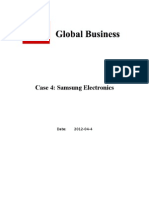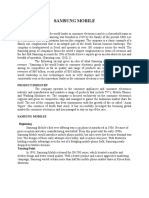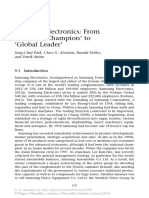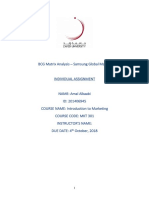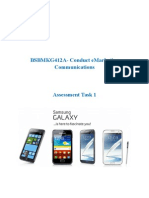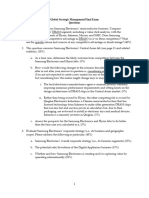0% found this document useful (0 votes)
15 views15 pagesConsumer Behaviour Project
The document discusses Samsung's evolution into a global leader in electronics, particularly through its Galaxy series of smartphones, which significantly contribute to its brand equity. It outlines Samsung's marketing mix, including product offerings, pricing strategies, distribution channels, and promotional tactics, while also analyzing external factors affecting the company through PEST analysis. Additionally, it examines consumer behavior related to the Samsung Galaxy S5, focusing on motivation, perception, learning, and demographic and psychographic profiles of potential buyers.
Uploaded by
Amjad HussainCopyright
© © All Rights Reserved
We take content rights seriously. If you suspect this is your content, claim it here.
Available Formats
Download as DOCX, PDF, TXT or read online on Scribd
0% found this document useful (0 votes)
15 views15 pagesConsumer Behaviour Project
The document discusses Samsung's evolution into a global leader in electronics, particularly through its Galaxy series of smartphones, which significantly contribute to its brand equity. It outlines Samsung's marketing mix, including product offerings, pricing strategies, distribution channels, and promotional tactics, while also analyzing external factors affecting the company through PEST analysis. Additionally, it examines consumer behavior related to the Samsung Galaxy S5, focusing on motivation, perception, learning, and demographic and psychographic profiles of potential buyers.
Uploaded by
Amjad HussainCopyright
© © All Rights Reserved
We take content rights seriously. If you suspect this is your content, claim it here.
Available Formats
Download as DOCX, PDF, TXT or read online on Scribd
/ 15

